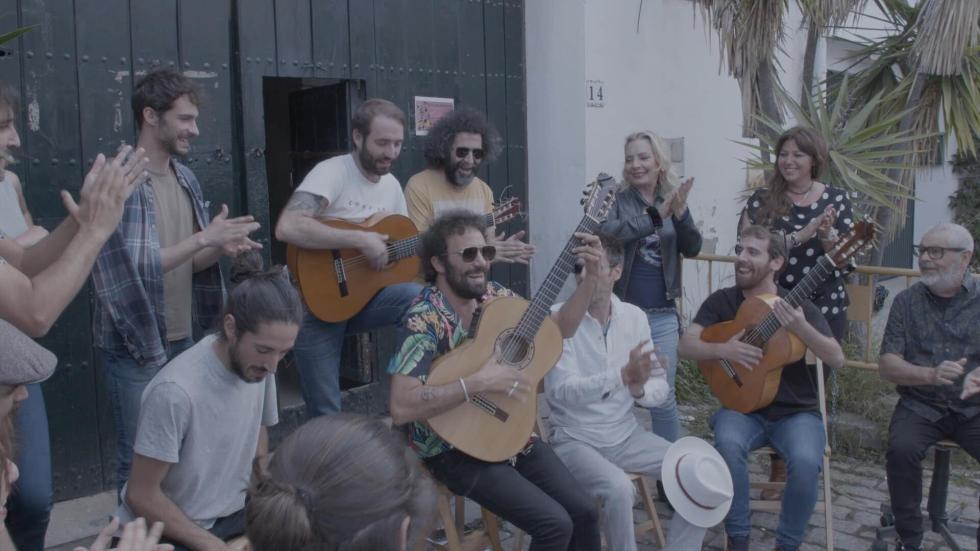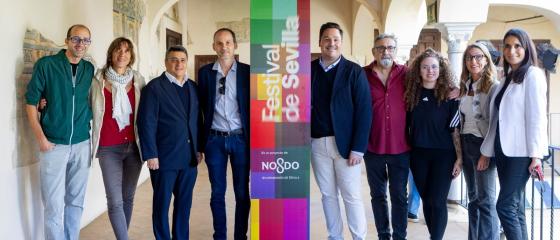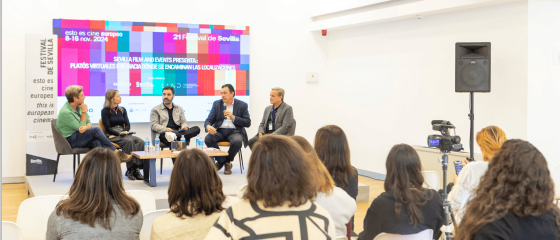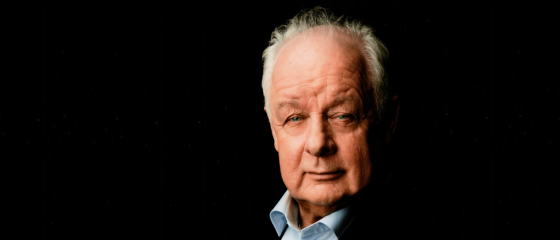
Shot in different parts of the world from April 2021 in Seville to April 2022, this series is the director's most ambitious work alongside producer Gervasio Iglesias.
The world premiere of the first two titles will take place on November 11th: 'Dejen de prohibir que no alcanzo a desobedecer todo', shot in Seville's Plaza del Pelícano, and 'Ainur', shot entirely in Kazakhstan.
Seville, 23 October 2021 - The Seville European Film Festival, to be held from November 5th to 13th, will host the presentation of The Year of 7 Films, the most ambitious project to date by director Gonzalo García-Pelayo and producer Gervasio Iglesias (La Zanfoña Producciones): the shooting of seven films in a single year, from April 2021 to April 2022. These seven films, the work of a leading figure in Spanish underground cinema and an artist whose style is so personal that his projects are as unusual, are to be completed with an eighth title and nine documentaries.
Specifically, on November 11th, the world premiere of the first two titles of this work will be presented at the SEFF as a special screening: Dejen de prohibir que no alcanzo a desobedecer todo, filmed and set in Seville, and Ainur, filmed in Kazakhstan.
Once again, this cinematographic odyssey, which places the director of Nueve Sevillas, winner ex aequo of the Las Nuevas Olas No Ficción award at last year's Festival, behind the camera, is conceived as a vehicle for García Pelayo, here in tandem with producer Gervasio Iglesias, to travel the world shooting films that have the joy of living as their axis.
The year of the seven films began in Seville last April with the filming of Dejen de prohibir que no alcanzo a desobedecer todo, continued in Kazakhstan with the filming of Ainur and followed by 12 different landscapes of the Spanish and Portuguese geography with Así se rodó Carne Quebrada, a title already in the editing phase. He will continue with the shooting of the rest of the films, still untitled, in Argentina, India and Jerez, among other destinations.
In the words of its director, in The Year of the Seven Films "we will try to make eight feature-length fiction films plus another nine full-length documentaries about the making of each film and a summary of all of them with unpublished material. The shooting of one of them could fail and we could go down to six... although there could also be another one, and that is what has been happening... That's why we are now talking about the year of the 7+1 films, as this last one will be produced by a different company".
Each of these titles will be shot on the most suitable dates: summer in Kazakhstan, spring in Argentina, January in India, landscapes in the autumn, another at a flamenco festival and two in the spring in Seville. With a practically identical crew in all of them but with different themes in each one, with three-week shoots and a running time of between 70 and 75 minutes "in which love, music and landscapes are the favourite themes, some with a lot of sex and others very clean", according to the director from Madrid.
Dejen de prohibir que no alcanzo a desobedecer todo: underground and rebellion
In Dejen de prohibir que no alcanzo a desobedecer todo, the first of the whole project, the main set is located around the Plaza Pelícano in Seville, in a corralón full of artists with a vision of life that has become a reference point for the city's new underground. Lead by music producer Pepe Ortega and with the participation of musicians such as El Canijo de Jerez, it is conceived as a choral film, with non-professional actors, whose script was written as the days of filming went by, as an exercise of pure improvisation "aligned with life, which is always in charge", in the words of its director.
Ainur: love, modern architecture, echoes and bicycles
Shot last summer in Kazakhstan and starring Víctor J. Vázquez in the role of a seductive man who loses his girlfriend in a tragic accident, Ainur, (Moonlight in Kazakh), is conceived as a story of love, modern architecture, echoes and bicycles as an internal road movie within the city which, according to García Pelayo, "invites the spectator to reflect on the future and on the impact of a completely new city, Nur-Sultan, and its people, upon the visitor".






